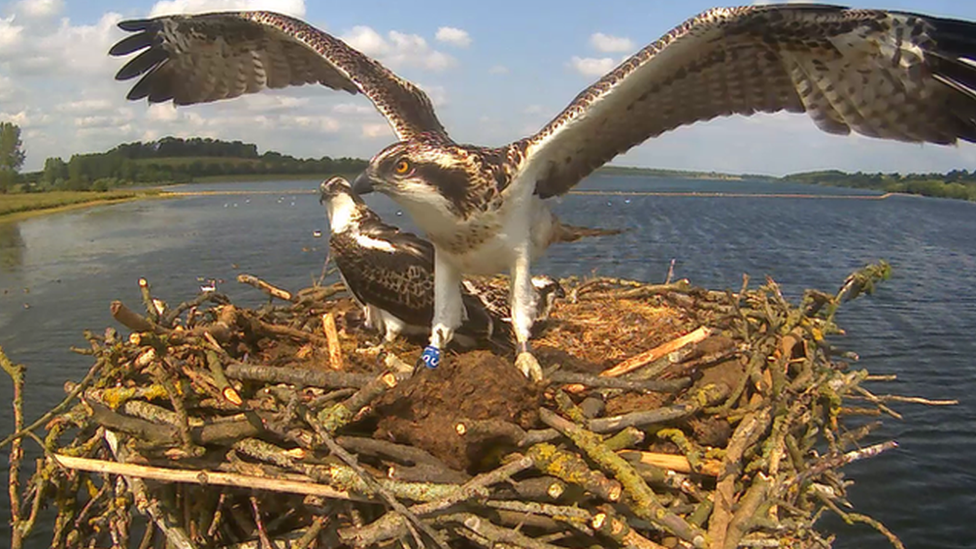Rutland Osprey Project: Hope prolific bird will have even more chicks
- Published
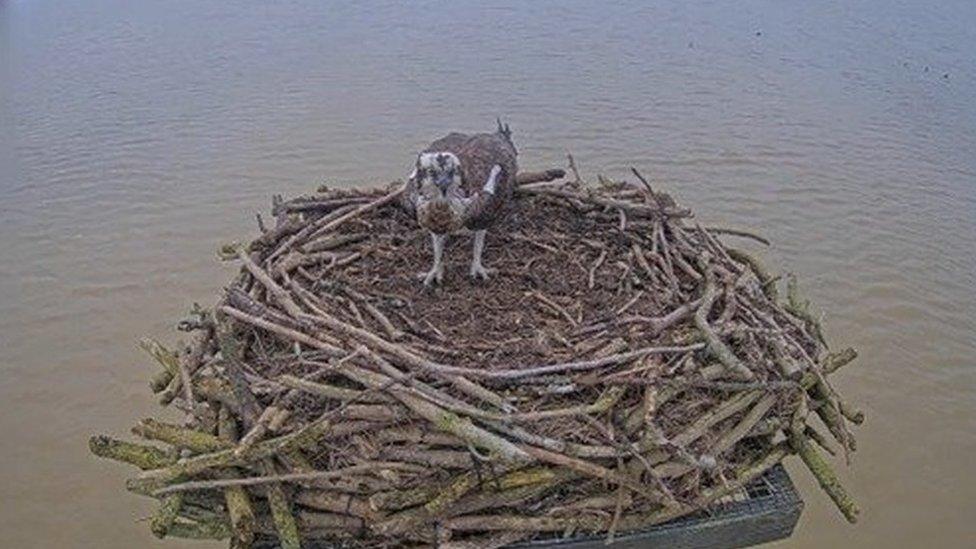
Maya touched down on her Manton Bay nest at Rutland Water on 12 March
A female osprey has returned to Rutland Water from migration for the 16th year in a row, leading to hopes she will have even more chicks.
Maya is already the Rutland Osprey Project's most successful breeding bird, having had 37 juveniles fledge from her nests.
The project, which has been running since 1996, has helped to repopulate ospreys in England.
They were once common, until humans drove them to extinction in the UK.
'Huge impact nationwide'
George Smith, an information officer for Leicestershire and Rutland Wildlife Trust, which runs the project, said Maya had played a significant role in repopulating ospreys.
"For an osprey, she's quite a considerably experienced osprey," he said.
"This is the 16th year she has returned to Rutland, but the 15th year she's breeding.
"Quite a considerable number of ospreys - not only in our region but across the UK - are related to Maya genetically, so she's had a huge impact nationwide."
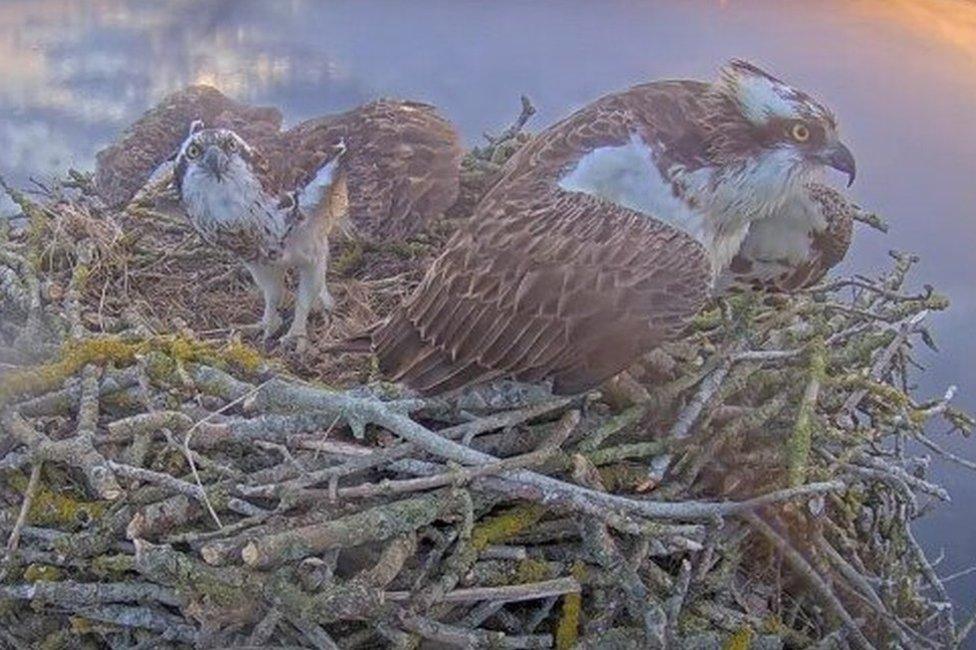
Maya has had 37 juveniles successfully fledge
Maya's arrival back in England was welcomed on the project's Facebook page, external.
"It's so bizarre that knowing this osprey has returned has made me inordinately happy," said one commenter.
Another said: "Welcome home Maya after your long journey. So many people delighted and relieved to see you back."
Another person added: "This is wonderful news. I always feel so happy to see her home."
Maya and the other ospreys spend the winter in Africa, Mr Smith said, but it is not known exactly where she goes as she is not ringed.
However, he said they were able to recognise Maya when she arrived back at Rutland because of her "really distinctive plumage".
She touched down on her Manton Bay nest on 12 March, making this her joint earliest date back.
"Maya's earlier return is crucial to her because it's imperative she's able to reclaim her old nesting site before other ospreys are able to get back," said Mr Smith.
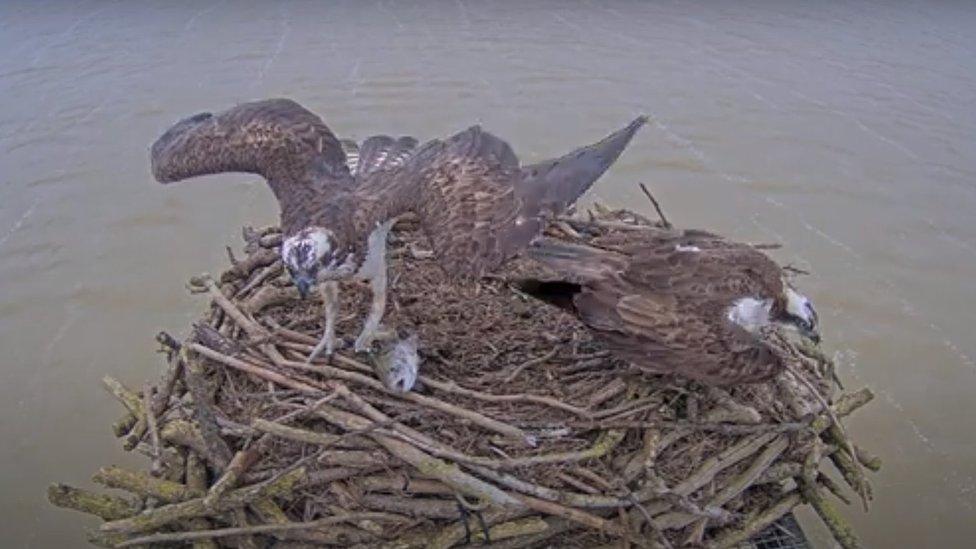
Maya's current partner, 33, touched down less than 24 hours after she did
The project's total number of successfully-fledged chicks reached 250 last year, which it described as a "milestone achievement", external.
Rutland Water was the first place in England where ospreys were bred after a 150-year absence.
Chicks were translocated from Scotland, where ospreys had relocated themselves after previously being extinct across the UK.
'Fantastic achievement'
Between 2010 and 2013, Maya had 11 successful juveniles fledge the nest with her previous partner, called 5R.
However, 5R did not return after this for an unknown reason.
Since then, Maya has had 26 successful juveniles fledge the nest with another partner, called 33, who returned less than 24 hours after Maya , externaltouched down this year.
"While we can't guarantee anything, our real hope is if Maya has another three [chicks] this year, that will bring us up to 40, which would be a fantastic achievement for her," said Mr Smith.

Follow BBC East Midlands on Facebook, external, on X, external, or on Instagram, external. Send your story ideas to eastmidsnews@bbc.co.uk, external or via WhatsApp, external on 0808 100 2210.
- Published2 November 2023
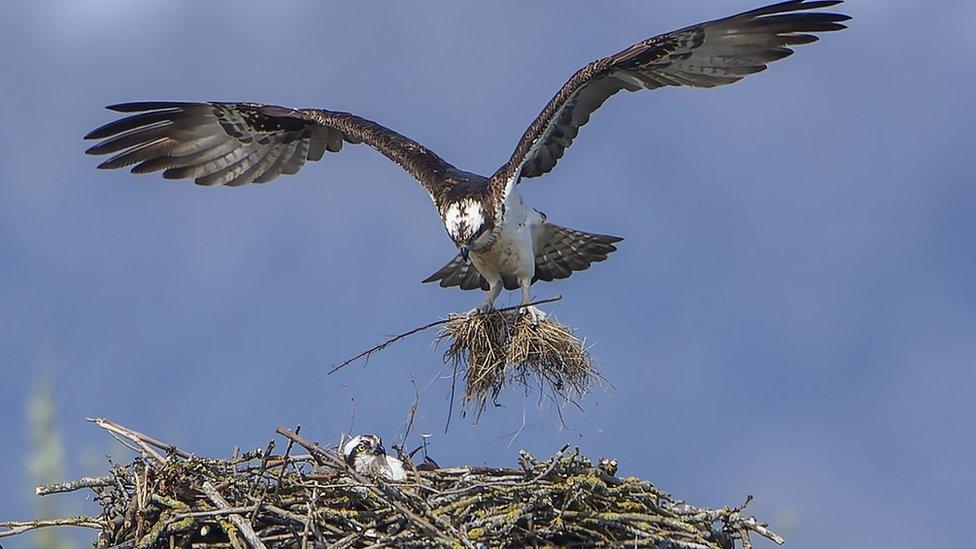
- Published5 August 2021
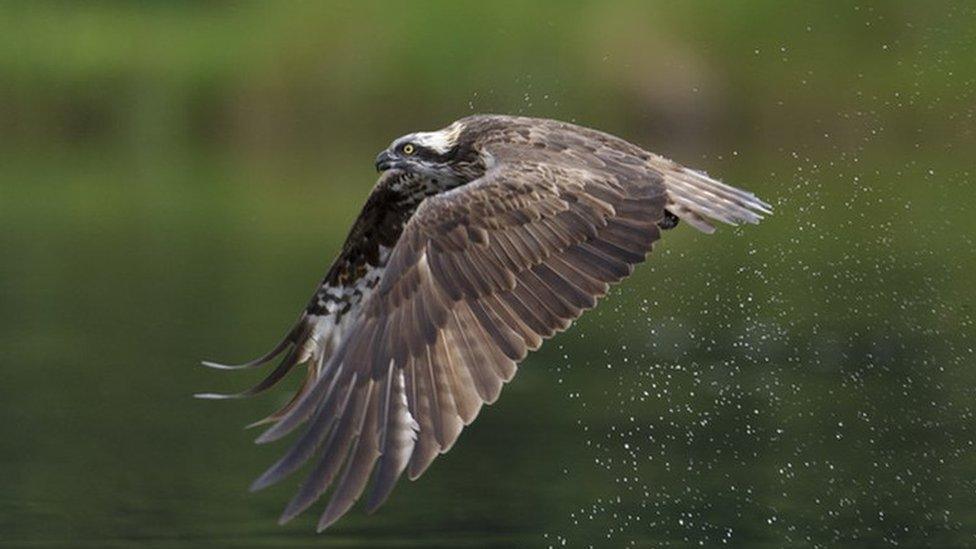
- Published30 May 2020
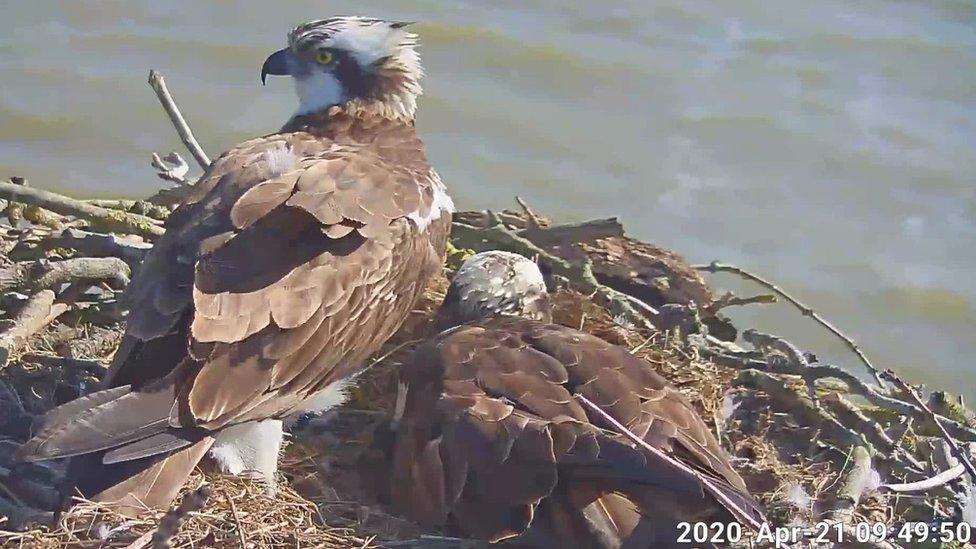
- Published27 July 2019
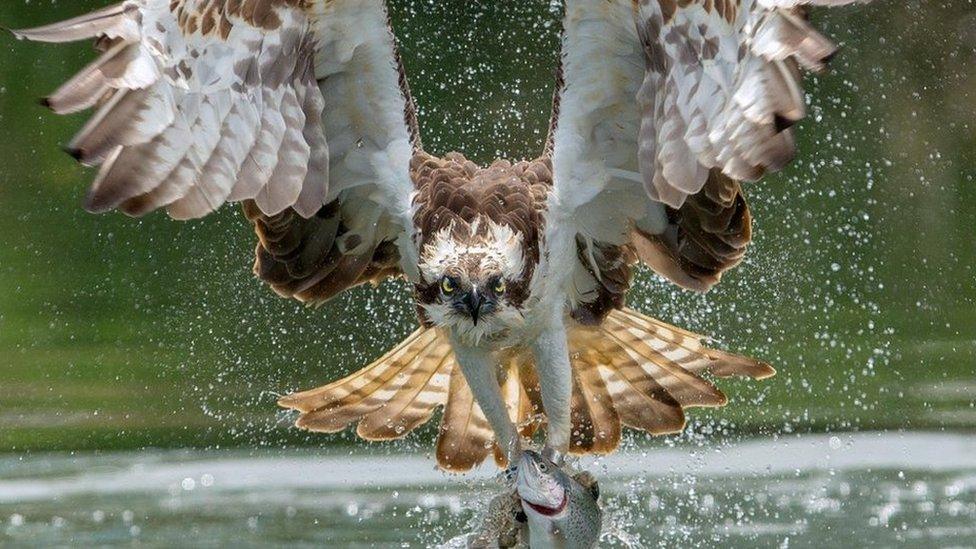
- Published6 July 2016
